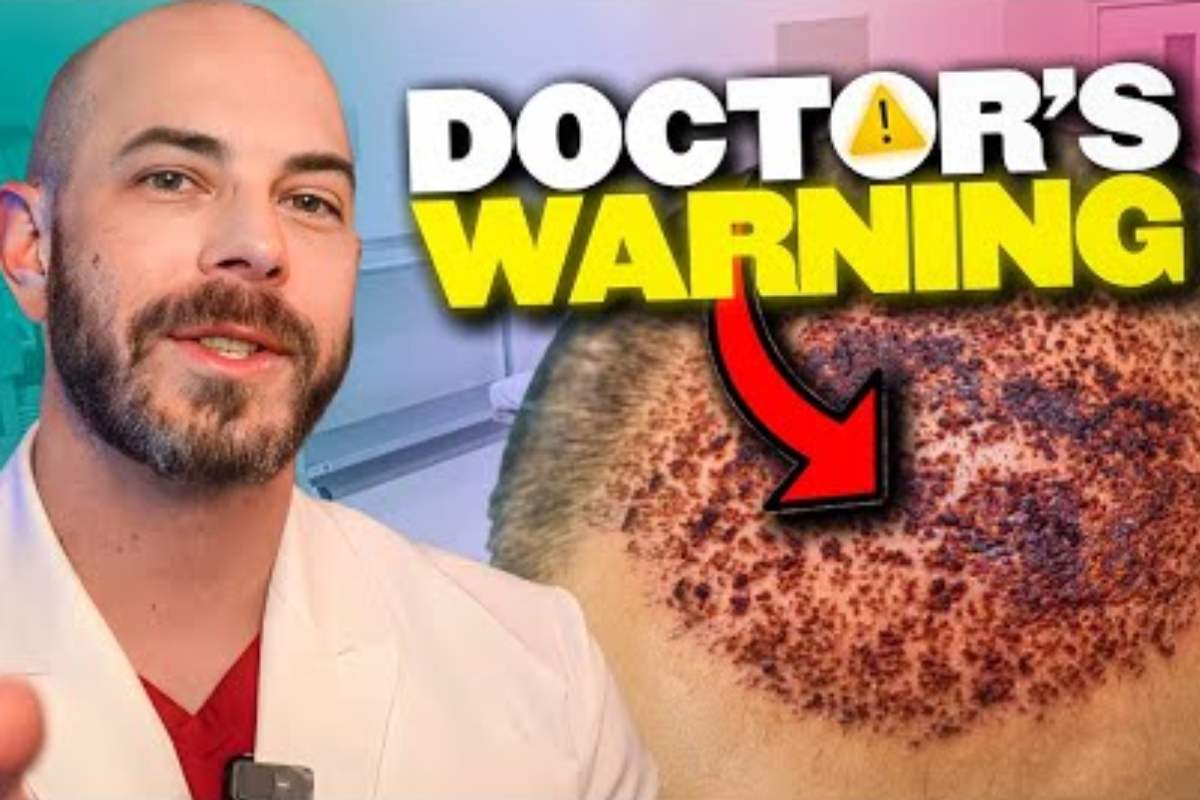Hair loss is something a lot of people deal with, and it can be frustrating when the usual treatments don’t seem to help. For those who want to avoid surgery, it makes sense to look into newer, less invasive options, and one treatment that’s been getting a lot of attention is stem cell therapy.
You’ve probably seen ads or heard stories claiming that stem cell therapy can help regrow hair. Some clinics even promise impressive results without surgery or downtime. But with all the hype, it’s easy to wonder what’s real and what’s just clever marketing.
The truth is, stem cell hair loss treatments come in many different forms. Not all of them actually use real stem cells. Some are still being tested in clinical trials, while others use the term “stem cell” even when there are no actual stem cells involved. That’s why it’s important to understand how these therapies are supposed to work, what the science really says, and whether they’re worth considering.
Let’s break things down in a clear and simple way so that you can decide if stem cell therapy is a good choice for treating your hair loss or if a different option like platelet-rich plasma (PRP) might be the better move right now.
What Is Stem Cell Therapy?
As the name implies, stem cell therapy refers to a type of medical treatment that aims to harness the capabilities of stem cells for growth or regeneration on human tissue. Stem cells are unique because they have the ability to turn into many other types of cells in the body. This is in contrast to a cell that has already committed to becoming, say, muscle (myocyte), brain (neurons) or a liver cell (hepatocyte) – a liver cell cannot decide that it wants to become a hair follicle, whereas a stem cell has the potential to transform into new muscles, neurons, or other organs, including a hair follicle. This potential is why researchers are studying stem cells to see if they can help repair damaged tissues (like dementia), heal injuries (torn ligaments), or even restore hair growth.
When it comes to treating hair loss, the idea is that these stem cells might be able to help repair or reactivate hair follicles.
If hair follicles are damaged or have stopped working, hair starts to thin or fall out, and some scientists believe stem cells might help bring those follicles back to life.
There are a couple of different ways stem cells are used in this type of therapy. Some treatments take stem cells from your own body, usually from fat tissue or even a small section of your scalp. Others use stem cells that come from a donor, like from bone marrow, umbilical cord tissue or placental material. These cells are processed in a lab and then injected into the scalp where hair loss is happening.
It all sounds promising, but it’s important to know that most stem cell therapy options for hair loss are either currently being studied or simply being used without evidence as to their effectiveness and patients cannot be promised any guaranteed results. Currently, there are no FDA approved stem cell treatments for hair loss in the United States.
Some people may be getting these treatments through research studies or by traveling to clinics outside the United States.
How Stem Cell Therapy Is Being Used for Hair Loss (in Theory)
The idea behind stem cell therapy for hair loss is simple: if stem cells can help repair damaged tissues, maybe they can also help restart the growth process in hair follicles that have slowed down or stopped working. Furthermore, could they generate new hair follicles entirely?
Most of the treatments being explored today involve taking stem cells from one area and injecting them into the scalp. For example, some doctors collect stem cells from fat tissue in your body. Others take a small sample from your scalp, process it in a special device to isolate the stem cells, and then inject them into thinning areas.
There are also clinics that claim to use stem cells from donors. These can come from places like amniotic fluid, umbilical cords or placental tissue. The goal in all of these cases is to create a healthier environment for your hair follicles so they can grow stronger, thicker hair.
So far, early studies have shown that some of these methods might help increase hair density or thickness. But these treatments are still in the early stages. Most of the research is being done in small trials, and the results are mixed.
Right now, there isn’t enough proof to say that stem cell therapy can fully regrow hair or stop hair loss for good. There also is not enough data to support a standardized technique in regard to preparation and handling of stem cell products, quantity to inject, timing of treatments, source of the stem cells, etc. This is why these treatments are not yet approved by the FDA. They may work for some people, but we still need more research to know how safe and effective they really are.
PRP vs. Stem Cell Therapy: What’s the Difference?
It’s easy to get confused between PRP and stem cell therapy, especially since some clinics use both terms when talking about hair loss treatments. While they might sound similar, they are different. And while there certainly are some peripheral stem cells (those traveling in your blood) that are in the PRP solution, it is misleading to call PRP a “stem cell treatment.”
PRP stands for platelet-rich plasma. It’s made from your own blood. A doctor takes a small sample of blood, spins it in a machine, and separates out the platelets. These platelets are full of natural growth factors (along with many other components) that help with healing and tissue repair. When injected into the scalp, PRP can help improve blood flow and support hair follicles, which may lead to stronger, healthier hair.
Stem cell therapy, on the other hand, uses cells that have the ability to change into other types of cells. The hope is that these stem cells can repair or regenerate hair follicles that are no longer growing hair. In theory, this could help regrow hair in areas that have started to thin or go bald.
Right now, PRP is much more common and better studied. PRP is not FDA-approved; however, the devices used to generate PRP are FDA-cleared as safe for use in processing human blood samples. PRP has been used for many years in both sports medicine and cosmetic treatments, so many physicians have become comfortable with the technique and its expected results. PRP is minimally manipulated – it employs platelets from your own body for their intended function; thus, it is considered to be a safe treatment.
Many doctors use PRP as a regular part of treating hair loss, especially in the early stages.
Stem cell hair loss treatments are still being tested. While they might sound more advanced, they aren’t proven yet and often cost a lot more than PRP. Some clinics even market PRP as a type of stem cell therapy, which adds to the confusion.
If you’re looking for a non-surgical option that’s widely available and backed by data, PRP is the better choice for now.
The Problem With “Stem Cell” Marketing Claims
The term stem cell therapy sounds impressive, and that’s exactly why some clinics use it in their marketing. But not every treatment that claims to involve stem cells actually uses them. In many cases, the phrase is used more to catch your attention than to describe what’s really happening.
Some clinics advertise stem cell hair loss treatments that are really just PRP. While PRP has benefits, it doesn’t contain stem cells. Other clinics might use products made from amniotic fluid or placental tissue, but these often don’t contain any live stem cells by the time they’re injected.
Still, the treatments get labeled as “stem cell” therapies to sound advanced and cutting-edge.
Then there are cosmetic products like shampoos, serums, and creams that claim to use plant stem cells. These don’t contain human stem cells at all, and there’s no strong evidence that plant stem cells can help with human hair growth. The claim that plant cells can direct human cells is completely unsubstantiated and does not make sense on any scientific level. Plants and humans do not share genetic codes.
These products might have moisturizing or antioxidant ingredients, but they aren’t going to reactivate your hair follicles.
Some international clinics take it a step further by offering injections with so-called fetal or embryonic stem cells. These treatments are expensive and may not be backed by solid research. In some cases, it’s unclear exactly what’s being injected, where or who the cells come from. Any human tissue has the potential to pass infectious material so it’s crucial that you know where something comes from if you’re injecting it into your body.
This is why it’s so important to ask questions and read the fine print. Just because a treatment is labeled as stem cell therapy doesn’t mean it uses real, living stem cells. If a clinic can’t clearly explain what the treatment involves or where the cells come from, that’s a sign to be cautious.
Are There Any Real Stem Cell Hair Loss Treatments Available Now?
Right now, there are no stem cell therapies for hair loss that have been fully approved by the FDA in the United States. While there are FDA-approved stem cell therapies for conditions such as leukemia, this means if a clinic is offering a stem cell treatment for hair regrowth, it’s either part of a research study or is providing this treatment despite it having not gone through the full approval process.
Some treatments are being tested in clinical trials. These include using stem cells from your own fat tissue or from a small piece of your scalp. The cells are separated, sometimes multiplied in a lab, and then injected into the scalp to try to help hair follicles grow again.
Early results from small studies are interesting, but the research is still new, and we don’t yet know how long the results last or how well they work for most people.
There are also clinics outside the U.S. offering treatments with donor stem cells, including ones taken from umbilical cords or placental tissue and injected through IV (intravenous into the blood stream), intraarticular (into a joint), and intradermal (into the skin). Most of these treatments are very expensive, sometimes costing anywhere from $5,000 to $100,000, depending on where you go and what’s included.
While these sound advanced, the science is still limited, and patients are often paying a lot of money without knowing if the treatment will work.
So, while there are real stem cell hair loss treatments being developed, most are not widely available yet. And the ones that are available usually come with a high price tag and a lot of unknowns.
If you’re thinking about trying one of these options, it’s a good idea to talk to a doctor who understands both the risks and the current research.
Should You Try Stem Cell Therapy for Hair Loss?
With all the buzz around stem cell therapy, it’s easy to wonder if it might be the answer to your hair loss. The truth is, it depends on what you’re looking for and how much risk you’re willing to take.
Right now, stem cell hair loss treatments are still in the early stages. While some people have seen results, there’s no guarantee it will work for everyone. The science is still catching up, and most of the available treatments haven’t gone through large clinical trials. That means the long-term effects, success rates, and even the safety of some of these methods are still unclear.
There’s also the cost to consider. Stem cell therapy for hair loss can be very expensive. Some treatments cost thousands of dollars per session, and you may need more than one session to see results.
If you’re thinking about trying stem cell therapy, ask your doctor some key questions: What kind of cells are being used? Are they coming from your own body or a donor? Is the treatment part of a clinical trial? Has it been reviewed by the FDA?
A trustworthy clinic should be able to answer these questions without hesitation.
For many patients experiencing hair loss, safer and more affordable options like PRP, minoxidil, or finasteride may be a better place to start. These treatments have been studied more and are widely available.
If you still want to explore stem cell therapy, just make sure you go into it with realistic expectations and a clear understanding of what you’re getting.







